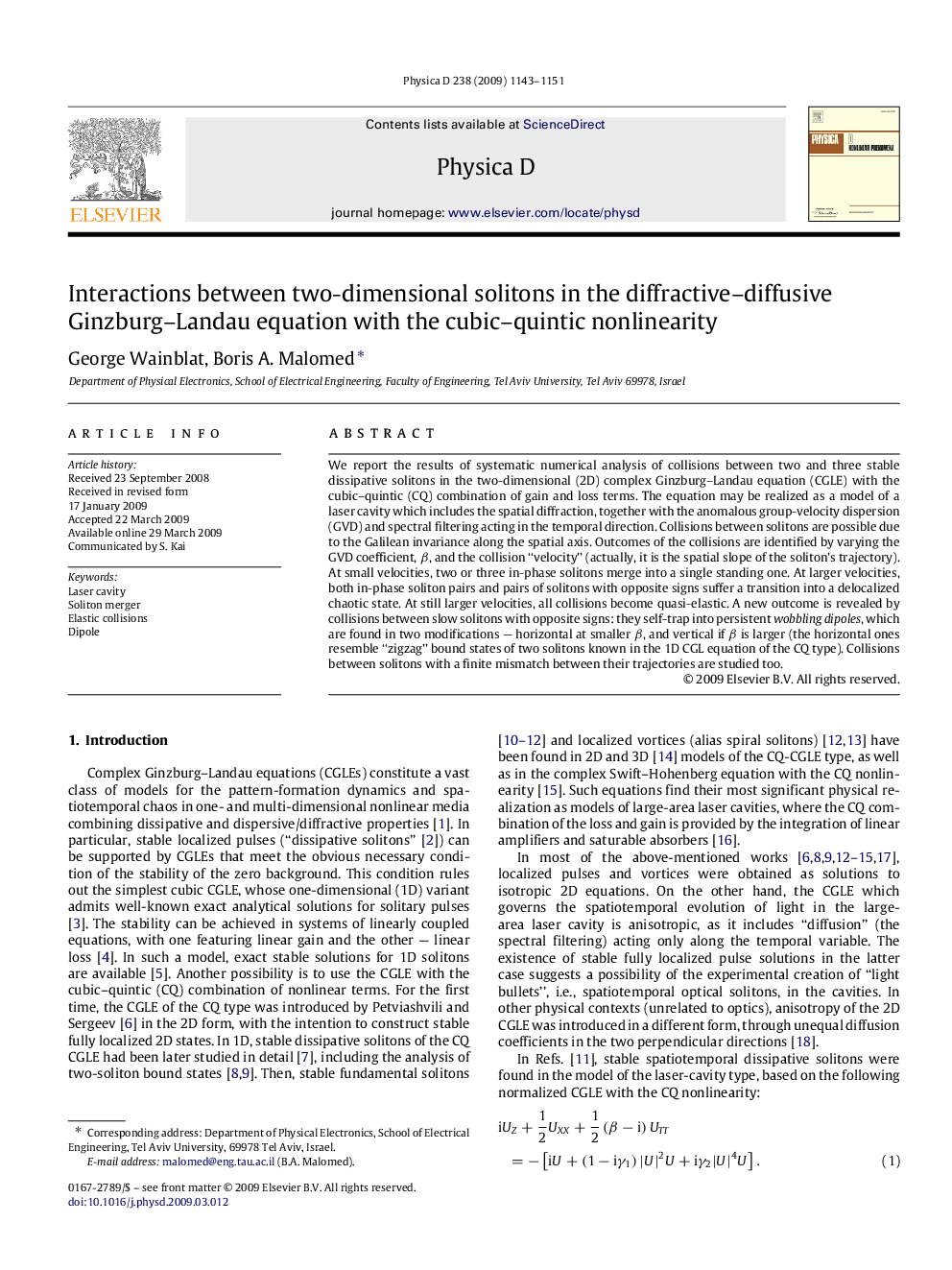| Article ID | Journal | Published Year | Pages | File Type |
|---|---|---|---|---|
| 1897575 | Physica D: Nonlinear Phenomena | 2009 | 9 Pages |
We report the results of systematic numerical analysis of collisions between two and three stable dissipative solitons in the two-dimensional (2D) complex Ginzburg–Landau equation (CGLE) with the cubic–quintic (CQ) combination of gain and loss terms. The equation may be realized as a model of a laser cavity which includes the spatial diffraction, together with the anomalous group-velocity dispersion (GVD) and spectral filtering acting in the temporal direction. Collisions between solitons are possible due to the Galilean invariance along the spatial axis. Outcomes of the collisions are identified by varying the GVD coefficient, ββ, and the collision “velocity” (actually, it is the spatial slope of the soliton’s trajectory). At small velocities, two or three in-phase solitons merge into a single standing one. At larger velocities, both in-phase soliton pairs and pairs of solitons with opposite signs suffer a transition into a delocalized chaotic state. At still larger velocities, all collisions become quasi-elastic. A new outcome is revealed by collisions between slow solitons with opposite signs: they self-trap into persistent wobbling dipoles , which are found in two modifications — horizontal at smaller ββ, and vertical if ββ is larger (the horizontal ones resemble “zigzag” bound states of two solitons known in the 1D CGL equation of the CQ type). Collisions between solitons with a finite mismatch between their trajectories are studied too.
